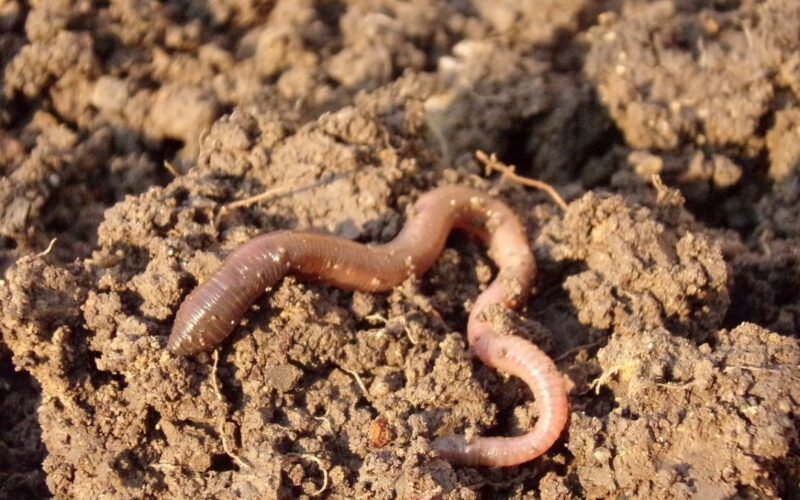Earthworms are some of the most underrated creatures on Earth. Often buried deep within the soil, these humble creatures may seem inconspicuous, but their role in the environment is immense. Earthworms have been around for over 500 million years, and they are vital for soil aeration, nutrient cycling, and maintaining ecological balance. Despite their importance, many people know very little about these fascinating creatures.
In this article, we will explore 10 fascinating facts about earthworms that highlight their remarkable biology, behavior, and ecological significance.
1: Earthworms Have a Unique Anatomy
Earthworms have a simple yet highly efficient anatomy. Their body consists of segments, and each segment contains muscle layers that help them move through the soil. This segmented structure allows them to move in a wave-like motion, pushing their bodies through the dirt. The exterior of their bodies is covered by a mucous layer that helps them move smoothly while also keeping them moist, as they need moisture to breathe through their skin.
One of the most notable features of earthworm anatomy is the clitellum, a thickened, saddle-like part of their body that is important during reproduction. This structure is also where the worm secretes mucus to form a cocoon for its eggs.
2: Earthworms Are Hermaphrodites
Earthworms are hermaphrodites, meaning that they possess both male and female reproductive organs. When two earthworms mate, they exchange sperm with each other, fertilizing each other’s eggs. The eggs are later deposited into a protective cocoon that they create using the secretion from their clitellum.
Earthworms can reproduce quickly, and some species can lay hundreds of eggs in a single year. The larvae hatch from the cocoon and grow into adult worms over time.
3: They Breathe Through Their Skin
Unlike humans and many other animals, earthworms don’t have lungs. Instead, they breathe through their skin by absorbing oxygen directly from the surrounding environment. For this process to work efficiently, earthworms need to keep their skin moist. If their skin dries out, they can suffocate, which is why earthworms are most active in humid conditions or moist soil.
This method of respiration is vital for their survival and also underlines the importance of keeping soil conditions suitable for earthworm populations.
4: Earthworms Play a Crucial Role in Soil Health
Earthworms are often referred to as “ecosystem engineers” because of their significant role in soil health. As they burrow through the earth, they help aerate the soil, allowing air, water, and nutrients to reach plant roots more efficiently. This process is vital for maintaining soil fertility.
By consuming organic matter like dead leaves and plant material, earthworms break down complex organic matter into simpler substances that plants can absorb. Their waste, known as castings, is rich in nutrients like nitrogen, phosphorus, and potassium, which enrich the soil and improve plant growth.
In addition, the tunnels they create provide pathways for water to flow into the soil, reducing surface runoff and increasing groundwater recharge.
5: Earthworms Have an Impressive Lifespan
While the lifespan of earthworms can vary depending on the species, most earthworms live between 4 and 8 years in ideal conditions. Some species, however, can live even longer, while others have shorter lifespans. Environmental factors such as temperature, moisture levels, and food availability can affect the lifespan of an earthworm.
In captivity, where they are provided with consistent care, some earthworms have been known to live for up to 10 years. However, in the wild, they often face predators such as birds, amphibians, and even other animals.
6: Earthworms Can Regenerate Lost Segments
A unique aspect of earthworm biology is their ability to regenerate lost segments. If an earthworm is cut in half, the front part of its body may be able to regenerate the missing sections, allowing it to survive and continue to function. However, the rear part of the body typically cannot regenerate into a new worm.
This regenerative ability is an evolutionary trait that helps earthworms recover from injuries, which can be crucial for survival in a world full of predators.
7: Earthworms Have a Diverse Diet
Earthworms are not picky eaters. They are detritivores, meaning that they feed on dead organic material, including decaying plant matter, leaves, and even small microorganisms in the soil. They ingest soil, extract nutrients from it, and expel the waste in the form of castings. Their diet is rich in organic material, which provides them with the nutrients they need for survival.
Interestingly, earthworms also help in breaking down toxins present in the soil, making them essential for soil cleanup in contaminated areas.
8: There Are Over 6,000 Species of Earthworms
Earthworms are a diverse group of animals, with over 6,000 species found across the globe. These species vary in size, color, and habitat. Some are small and live in moist, shaded areas, while others grow to impressive sizes and thrive in agricultural fields or forests.
The most commonly known species is the Lumbricus terrestris, the large nightcrawler often found in gardens. Other species, like the African giant earthworm (which can grow over 9 feet long), are less well-known but are equally fascinating.
9: Earthworms Are Sensitive to Light
Earthworms are photophobic, meaning they are sensitive to light and will avoid exposure to it. This behavior is linked to their survival instincts, as light can signal potential predators, such as birds. Earthworms are more active at night or in the early hours of the morning when it’s darker, and they retreat deeper into the soil during the day to stay out of sight.
Their sensitivity to light also plays a role in their ability to maintain their moist environment underground, as exposure to the sun can quickly dry them out.
10: Earthworms Can Improve Crop Yields
Due to their role in soil aeration, nutrient cycling, and composting, earthworms are invaluable to agriculture. They help maintain soil structure, reduce compaction, and increase the nutrient content of the soil. Farmers and gardeners often encourage earthworm populations to thrive in their fields by using organic farming methods and reducing chemical pesticide use.
The presence of earthworms in soil has been shown to improve crop yields, making them a vital ally in sustainable farming practices.
The Unsung Heroes of Our Ecosystem
Earthworms may be small, but they are incredibly powerful creatures that play a crucial role in maintaining the health of our planet. From enriching the soil to helping in the breakdown of organic materials, earthworms are the silent workers of the ecosystem. By understanding these 10 fascinating facts about earthworms, we can better appreciate their importance and take steps to protect their populations.
Whether you’re a gardener, an environmental enthusiast, or simply someone interested in nature, it’s clear that earthworms deserve our respect and care. So, the next time you see one wriggling in the soil, remember just how vital it is to our world.










